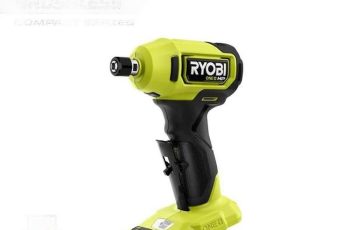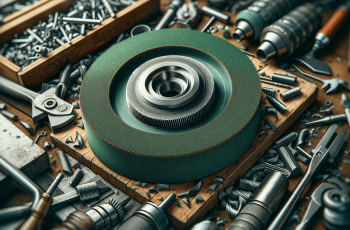Have you been searching for a versatile tool that can handle all your grinding needs?
What is a Die Grinder?
A die grinder is a high-speed rotary tool that excels in polishing, grinding, and refining various materials. Unlike larger grinding tools, a die grinder is perfect for intricate work, allowing you to tackle small to medium jobs with ease.
Key Specifications
Here’s a quick breakdown of essential specifications that will help you understand the anatomy of a die grinder:
| Specification | Details |
|---|---|
| Power Source | Corded or Cordless |
| RPM (Rotations per minute) | 20,000 to 30,000+ |
| Collet Size | 1/4 inch or 1/8 inch |
| Weight | Typically 4 to 10 lbs |
| Air Pressure | 90 to 120 PSI (for pneumatic models) |
These specifications allow for a range of versatility, from heavy-duty tasks to more delicate jobs.
Types of Die Grinders
Understanding the different types of die grinders can help you choose the perfect tool for your needs. You’ll generally find three main types:
Electric Die Grinders
Electric die grinders are the most common type. They are powered by electricity, which means you’ll be tethered to an outlet—but the trade-off is consistent power and speed. These are suitable for both professionals and DIY enthusiasts.
Pneumatic Die Grinders
Pneumatic die grinders use compressed air to operate. While they often provide more power and a higher RPM than their electric counterparts, they require an air compressor and are typically lighter. However, you’ll need to keep in mind that airflow is critical for optimal performance.
Battery-Powered Die Grinders
If mobility is your primary concern, battery-powered die grinders are the way to go. Though they may not have the same power as electric or pneumatic models, advancements in battery technology have made these tools increasingly effective.
Why Choose a Die Grinder?
When you think about all the tools available today, you might wonder why you should specifically choose a die grinder. Here are some compelling reasons:
Versatility
Whether you’re carving, grinding, or polishing, a die grinder can take on a variety of tasks. You can use it on metals, plastics, wood, and even stone, which makes it a fantastic addition to your toolbox.
Precision
The compact size of a die grinder allows for great precision in your work. If you have intricate designs or tight spaces to navigate, this tool can be a true lifesaver.
Affordability
Compared to some specialized tools, die grinders generally come at a reasonable price point. This makes it easier for hobbyists and professionals alike to invest in quality equipment without breaking the bank.
Features to Look for in a Die Grinder
Not all die grinders are created equal. Here’s what you should be keeping an eye out for when choosing your ideal model:
Speed Control
Having variable speed options is crucial for different tasks. Whether you need high speed for grinding or lower speed for polishing, look for models with adjustable RPM settings.
Ergonomics
You’ll want a die grinder that feels comfortable in your hand, especially for extended use. Grip and weight can make a significant difference, so take the time to notice how it feels while working.
Noise Level
Some die grinders can get quite loud. If you’re working in a quieter environment or plan to use the tool for long periods, consider a model that operates at a lower noise level.
How to Safely Use a Die Grinder
Safety should always come first when using a power tool. Here’s a checklist to ensure you’re operating your die grinder safely:
Use Proper Protective Gear
Wearing safety goggles, gloves, and a dust mask can help protect you from debris and dust generated while grinding.
Secure Your Materials
Always ensure that the material you are working on is secured properly. This prevents any movement that could lead to accidents.
Keep the Work Area Clean
A clean workspace minimizes distractions and reduces the risk of accidents. Make sure to clear away any unnecessary clutter while you work.
Maintenance Tips for a Die Grinder
To ensure the longevity and optimal performance of your die grinder, routine maintenance is key. Here are some helpful tips:
Clean Regularly
Debris can accumulate over time, affecting performance. Make sure to clean the grinder regularly, focusing on the collet and bit area.
Check Air Filters for Pneumatic Grinders
If you’re using a pneumatic model, remember to check your air filters regularly to maintain proper airflow and prevent obstructions.
Inspect For Wear And Tear
Always check for any signs of damage or wear, especially the bits and collets, before you start a new project to avoid any mishaps.
Applications of a Die Grinder
So, where can a die grinder really shine? Let’s look at some of the most common applications:
Metalworking
Die grinders are a go-to tool in metalworking shops for smoothing out metal edges, polishing surfaces, and deburring around welds.
Automotive Work
For those in the automotive field, die grinders are handy for tasks such as removing rust, shaping metal surfaces, and performing fine detail work on engines.
Woodworking
In woodworking, you can use a die grinder for creating intricate designs, especially on furniture or sculptures.
Jewelry Making
If you’re in the jewelry business, a die grinder is ideal for polishing and finishing pieces to give them that perfect shine.
Pros and Cons of Using a Die Grinder
Just like any tool, die grinders come with their perks and drawbacks. Here’s a quick look at both sides:
Pros
- Versatile Usage: Can be used on a wide range of materials.
- Compact Size: Easy to handle and maneuver.
- Cost-Effective: Reasonably priced for the power and versatility offered.
Cons
- Noise Levels: Can be quite loud during operation.
- Power Dependence: Corded models may limit mobility, while battery models might lack power.
- Learning Curve: New users may need time to master fine control.
Popular Brands
With so many brands available, it can be hard to decide which one to trust. Here are some well-regarded brands in the realm of die grinders:
Makita
Known for their durability and excellent performance, Makita die grinders are favored by professionals for heavy-duty applications.
DeWalt
DeWalt tools are designed to withstand rigorous use, making them ideal for workshops and job sites. Their die grinders typically have good ergonomics and variable speed options.
Milwaukee
Milwaukee die grinders are well-known for their powerful motors and versatility. They’re particularly popular among both DIY enthusiasts and professionals.
Bosch
Bosch is another trusted brand, offering die grinders with high reliability and innovative features at competitive prices.
Budget Considerations
When you start looking at die grinders, you may wonder how much you should be budgeting for one of these handy tools. While you can find models at various price points, here’s a general idea:
Entry-Level Models
For basic needs, you can find die grinders priced between $50 to $100. These models may lack some advanced features but can still get the job done.
Mid-Range Models
In the range of $100 to $200, you can find quality die grinders that offer better speed control, ergonomic designs, and improved durability.
Professional Models
If you’re looking for something that can handle intense workloads, you may want to invest between $200 to $500 for a professional-grade die grinder.
Conclusion
Choosing the right die grinder can significantly impact your work, whether you’re a seasoned pro or just starting out.
Make sure to consider your specific needs, budget, and the types of projects you will take on. With the correct die grinder in hand, you’ll be more than equipped to tackle a range of tasks with confidence and precision.
Disclosure: As an Amazon Associate, I earn from qualifying purchases.




